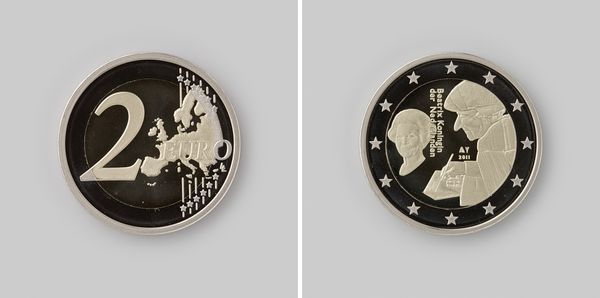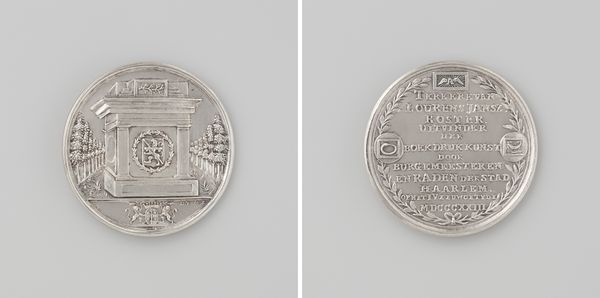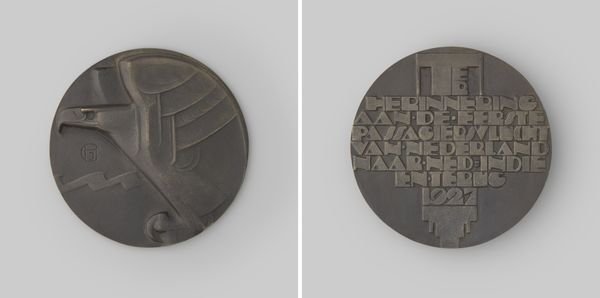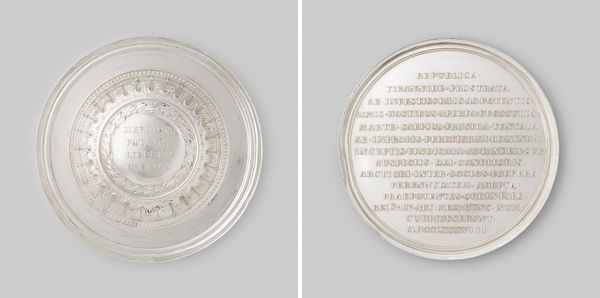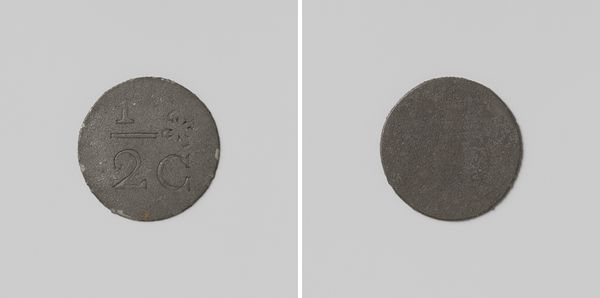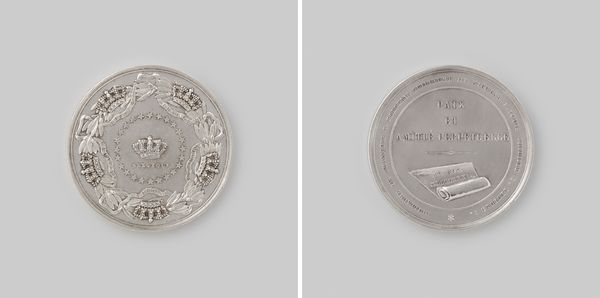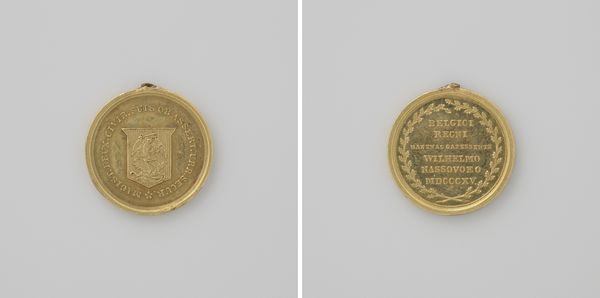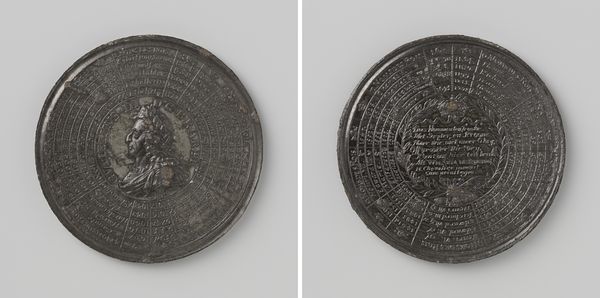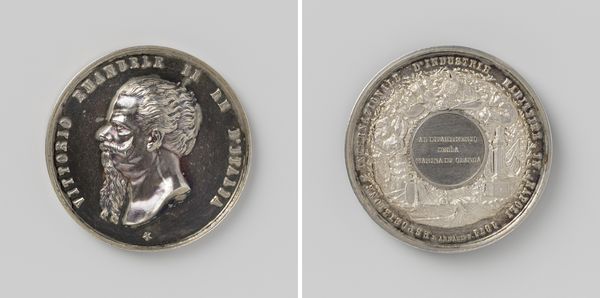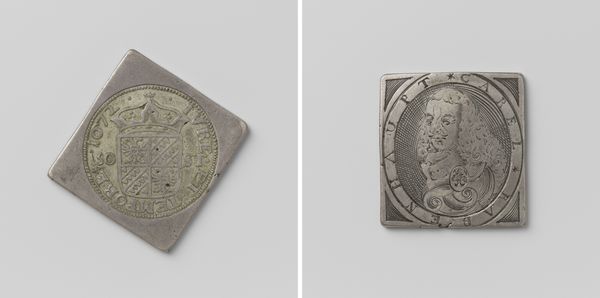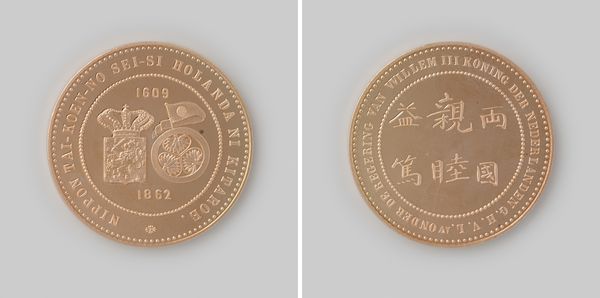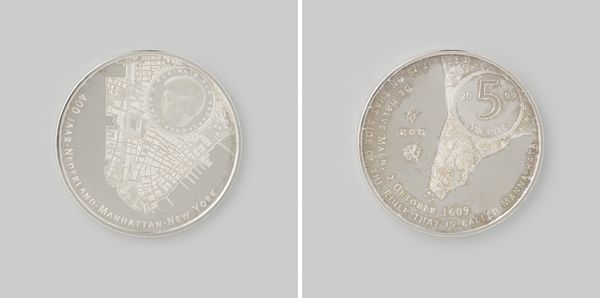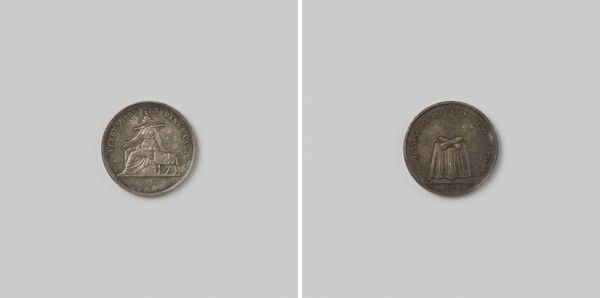
metal, sculpture
portrait
product shot
3d printed part
metal
plastic material rendering
virtual 3d design
polished
product design photgrpaphy
3d shape
bold defined shape
sculpture
3d digital graphic
metallic object render
decorative-art
modernism
Dimensions: diameter 21 cm, height 1.1 cm, weight 90.15 gr, weight 9.28 gr, weight 9.98 gr, weight 6.01 gr, weight 3.01 gr, weight 1.51 gr, weight 3.52 gr
Copyright: Rijks Museum: Open Domain
Editor: Here we have "Een herinnering aan de Nederlandse gulden...", or "A Remembrance of the Dutch Guilder..." by Bruno Ninaber van Eyben, spanning the years 1982 to 2002. It seems to be a sculptural work, using metal. What stands out to me is how this work monumentalizes something as commonplace as currency. What do you make of it? Curator: It's interesting how Ninaber van Eyben takes these everyday objects, the last circulating Dutch guilder coins, and presents them as something precious, worthy of artistic consideration. Consider the socio-political context: the introduction of the Euro was a huge shift. What does it mean to memorialize the guilder in this way? Editor: Perhaps it's about nostalgia? A way of grappling with national identity in the face of globalization? Curator: Precisely. Think about the museumification of objects like this. How do museums, as institutions, shape what we consider culturally significant? The very act of displaying this piece elevates the guilder from simple currency to a symbol of Dutch history and identity. Notice also the profile of Queen Beatrix. How does her image contribute to this narrative? Editor: It seems to further emphasize the Dutch identity. Her image connects the coins to the monarchy and national pride. What is also striking is that there are actually 2 parts to this metallic, coin-like sculpture. What's your read on the 'open' set of coins displayed? Curator: That presentation prompts us to consider circulation, economic exchange, and even loss. Displaying it within the setting seems to fix and contain the coins, freezing them in time. Are we celebrating the past, or mourning a loss? What is the public role of something like commemorative coins? Editor: This makes me realize I was looking at it as a static object, and not considering its relationship to these wider cultural and political shifts. Curator: Exactly. Art rarely exists in a vacuum. Considering its context gives it so much richer of a meaning. Editor: I'll certainly be keeping that in mind when looking at similar artworks from now on! Thanks for opening my eyes!
Comments
No comments
Be the first to comment and join the conversation on the ultimate creative platform.
